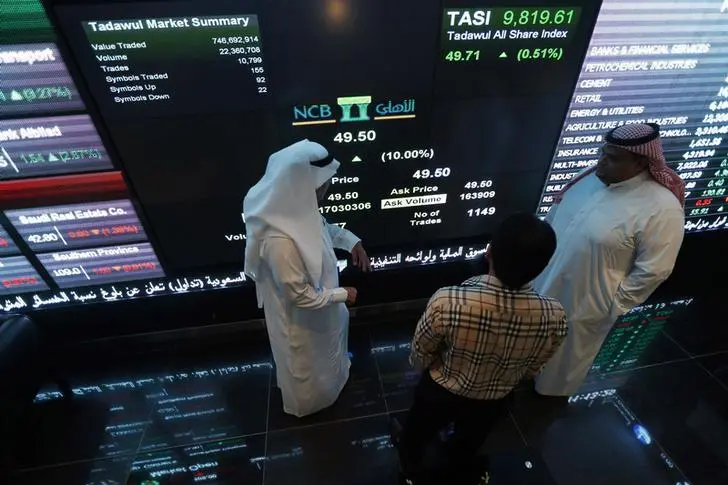PHOTO
SYDNEY: Asia share markets turned hesitant on Monday as strife in the Middle East offset more stimulus measures in China, while the Nikkei dived on concerns Japan's new prime minister favoured normalising interest rates.
The rush of stimulus helped outweigh a poor manufacturing survey and lift the blue-chip CSI300 another 3.0%, having already jumped 16% last week. The Shanghai Composite climbed 4.4%, on top of last week's 13% rally.
Continued Israeli strikes across Lebanon added geopolitical uncertainty to the mix, though oil prices were still restrained by the risk of increased supply.
The week is packed with major U.S. economic data including a payrolls report that could decide whether the Federal Reserve delivers another outsized rate cut in November.
The Nikkei led the early action with a dive of 4.1% as investors anxiously waited for more direction from new Prime Minister Shigeru Ishiba, who has been critical of the Bank of Japan's easy policies in the past.
However, he sounded more conciliatory over the weekend saying monetary policy "must remain accommodative" given the state of the economy.
That helped the dollar nudge up 0.2% to 142.52 yen , after sliding 1.8% on Friday from a 146.49 top.
"Ishiba has endorsed the BoJ's intention to normalise monetary policy, albeit leaving it uncertain as to the pace and timing," said HSBC economist Jun Takazawa.
"If additional stimulus measures are realised, this would also likely buttress the recovering trend in spending, thereby strengthening the BoJ's conviction to raise interest rates at a gradual pace," he added. "All in all, we continue to see a constructive outlook for Japan."
Over in China, the central bank said it would tell banks to lower mortgage rates for existing home loans by the end of October, likely by 50 basis points on average.
That follows a barrage of monetary, fiscal and liquidity support measures announced last week in Beijing's biggest stimulus package since the pandemic.
"We believe deflation risks are now being taken more seriously," said Christian Keller, head of economic research at Barclays. "At the same time, the Politburo suggests a consensus has likely been reached in Beijing that fiscal stimulus and central government leverage are necessary to arrest the downturn."
"This is an important shift in a market that was looking for more than just the bare minimum."
WALL ST ON A ROLL
The rally in China helped MSCI's broadest index of Asia-Pacific shares outside Japan firm 0.3%, having surged 6.1% last week to a seven-month high.
Wall Street also had a rousing week helped by a benign reading on core U.S. inflation on Friday that left the door open to another half-point rate cut from the Fed.
Futures imply around a 53% chance the Fed will ease by 50 basis points on Nov. 7, though the presidential election two days earlier remains a major unknown.
A host of Fed speakers will have their say this week, led by Chair Jerome Powell later on Monday. Also due are data on job openings and private hiring, along with ISM surveys on manufacturing and services.
EUROSTOXX 50 futures FTSE futures were little changed in early trade. S&P 500 futures were flat on Monday, while Nasdaq futures dipped a fraction. The S&P 500 index is up 20% year-to-date and on track for its strongest January-September performance since 1997.
In currency markets, the dollar index was flat at 100.41 after easing 0.3% last week. The euro stood at $1.1167 , having bounced on Friday in the wake of the benign U.S. inflation report.
The euro zone releases its inflation figures this week, along with producer prices and unemployment. German inflation and retail sales are due later on Monday, while European Central Bank President Christine Lagarde speaks to parliament.
A softer dollar combined with lower bond yields to help gold reach record highs at $2,685 an ounce. It was last at $2,656 an ounce, and on track for its best quarter since 2016.
Oil prices crept higher at tensions in the Middle East offset concerns about possible increased supply from Saudi Arabia.
Brent rose 61 cents to $72.59 a barrel, while U.S. crude gained 44 cents to $68.60 per barrel.
(Reporting by Wayne Cole; Editing by Jamie Freed and Christopher Cushing)






















